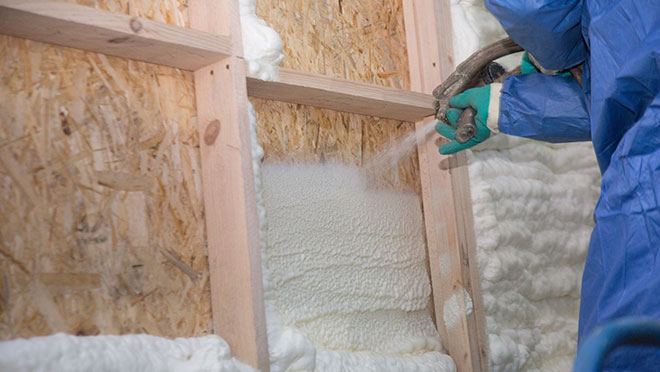Heat pump, insulation drive comfort in Sicamous, B.C. home

Renovation rebates pay off in 17% drop in energy use in 44-year-old home
Sitting between Mara and Shuswap Lakes, Sicamous is a heckuva place to spend your retirement years, which is why Dave Fortier and his wife Ellie call the "Houseboat Capital of Canada" home. But it also gets pretty hot in the summer, and occasionally very cold in the winter. For 20 days last August the mercury hit at least 27°C, and this past January, the temperature dived to a low of -17°C.
The Fortiers live in a 44-year-old home that was until fairly recently heated only by electric baseboard heaters, and was so poorly insulated that the baseboards couldn't keep up on the coldest days, and pipes below the floor were in danger of freezing. That's not the case anymore, following two different renovations – installation of a heat pump, plus insulation added to the home's walls.
"We had the heat pump installed when we arrived here about four or five years ago," says Dave. "We didn't have enough funds to do the insulation at first, although I did upgrade the insulation in the attic. Later we had foam insulation blown into the walls and into the crawlspace walls underneath."
In both cases, the Fortiers used rebates from BC Hydro's home renovation rebate program to reduce costs: $819 in insulation savings, and $800 for the heat pump1. They also leaned on contractors with Program Registered Contractors (PRC) designation, which ensures they're trained in industry best practices.
"I heard about the heat pump because two of my coffee buddies had them installed and were all gung-ho about them," says Dave, who, based on their recommendation, used a Shuswap-area PRC for the installation of two heat pumps – one for the main area, another for a converted ensuite – although the BC Hydro rebate is limited to one heat pump per home.
After the Fortiers moved into their home, upgraded the attic insulation, and had the heat pumps installed in 2016, electricity use in the home fell an average of 12% compared to the two previous years. Once the walls and crawlspace were insulated to R24 and R20 thermal values respectively in 2018, those savings increased another 5%.
The key for the Fortiers, who now spend about $2,400 a year on electricity, is that the house is way more comfortable than it used to be.
"I'm 80 now and my wife's in her 70s, so we like to keep the house a little warmer in the winter, around 23°C," Dave says. "On the coldest days, when it gets down to around -18°C, we can also use the baseboard heaters at the far end of the house. It's a nice backup."

As summers get warmer, cooling becomes a priority
As of late May, and despite some days of 25°C plus in Sicamous, the Fortiers had yet to use their heat pump for cooling because the improved insulation kept it cool enough. As it gets warmer, they'll set the heat pump at about 23 or 24°C to ensure the home stays cool.
"In the summertime we don't even notice the difference between night and day – it's the same temperature all the time," says Dave, who says the heat pump is keeping temperatures consistent. "The cooling is excellent."
A February 2020 report titled Climate Projections for the Okanagan Region, says that climate change is pushing more days past 30°C in the region, and will gradually make summers start earlier and last longer into autumn. There are similar trends on the coast, where one PRC insulation contractor is experiencing a spike of new attic insulation requests after some unseasonably hot days this April and May.
"People who are at work in their home all day during the pandemic have noticed how hot their homes get when the weather gets warmer," says Anny Knights, who owns a long-established insulation firm that serves Victoria and the Vancouver area. "That's the biggest influx of new calls I'm getting. Some people are saying they're finding it very warm in their upstairs offices, so they want to upgrade the attic insulation."
As a PRC contractor, Knights says she gets a lot of calls via the PRC search tool on CleanBC Better Homes website. But like Dave Fortier's experience with heat pumps, the work often arrives by word of mouth recommendations.
"We're hearing stories such as, 'I was at my father-in-law's house and it's so much cooler than ours,'" she says. "And they learned that we had done the work."
Knights cautions against expecting that insulation costs will reflect what you might find on some online calculators. She says that every attic is unique, and while average costs for insulation might be $1.50 a square foot, costs can go up in attics that are harder to work in, involve extra work around potlights, skylights, exposed ducting or fans, and where more insulation needs to be added to achieve a high R-value.
1 The current rebate available for an eligible heat pump is $1,000. Learn more.
